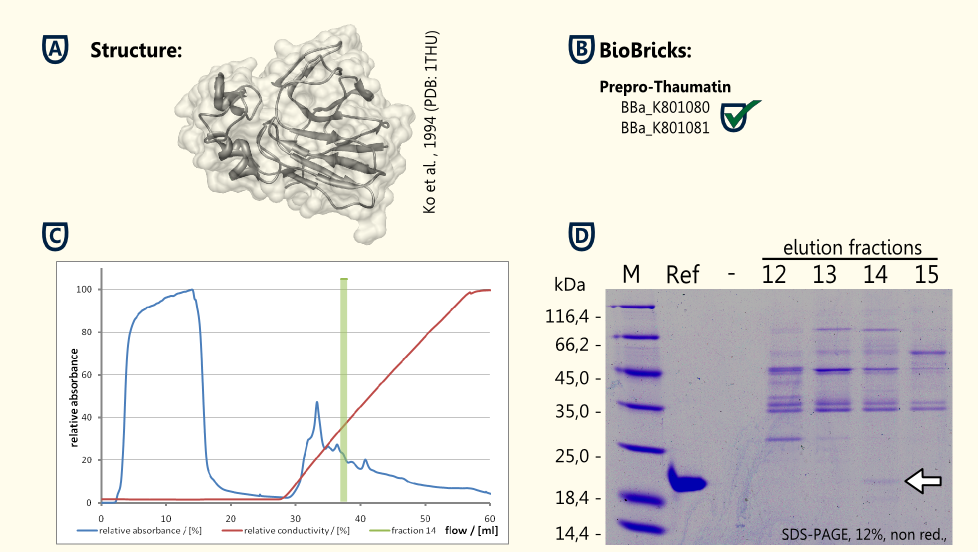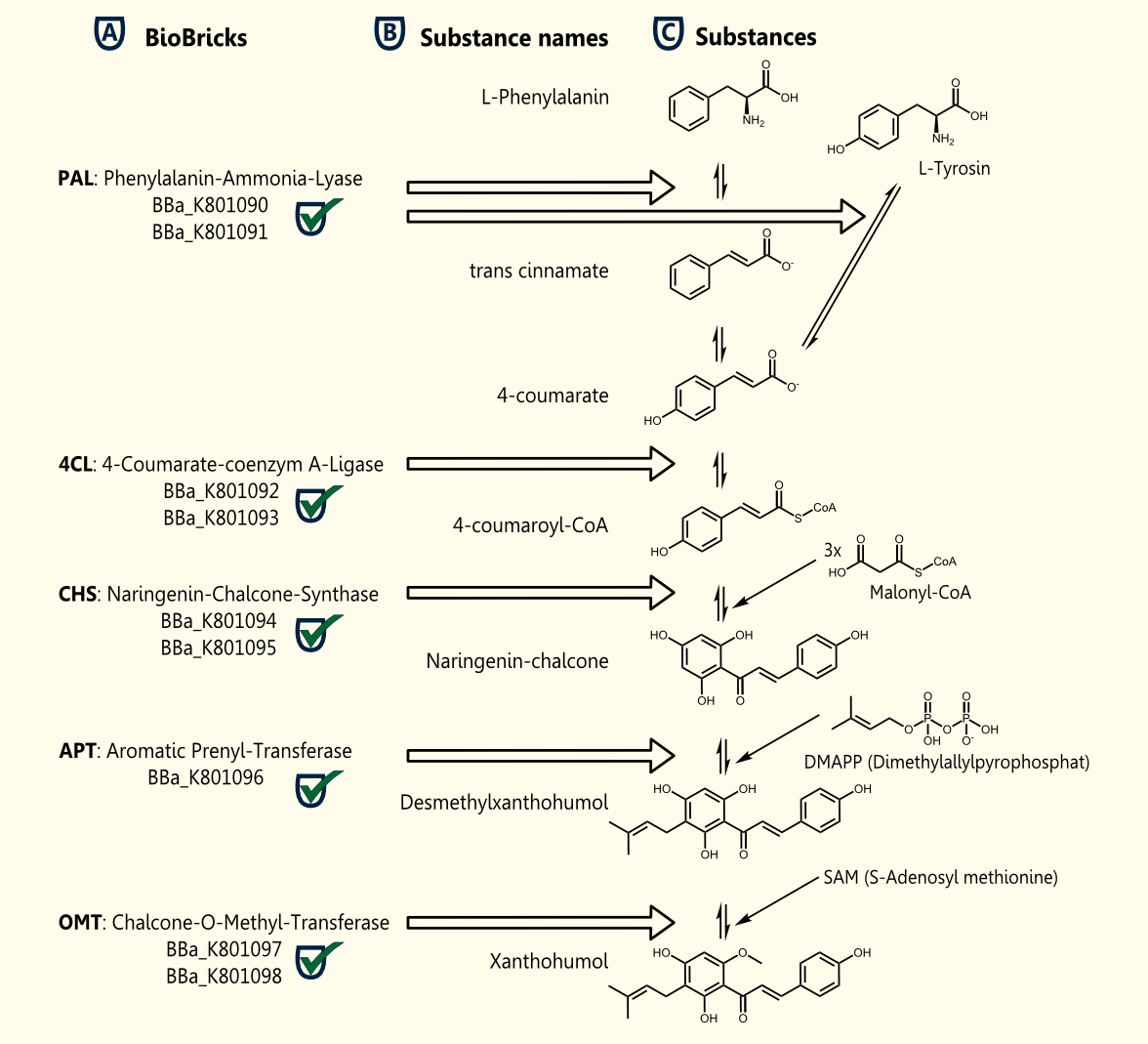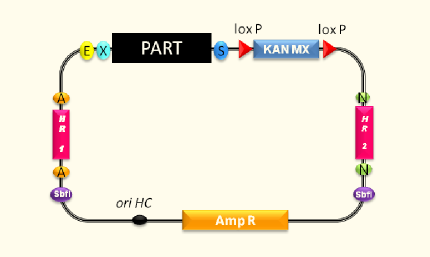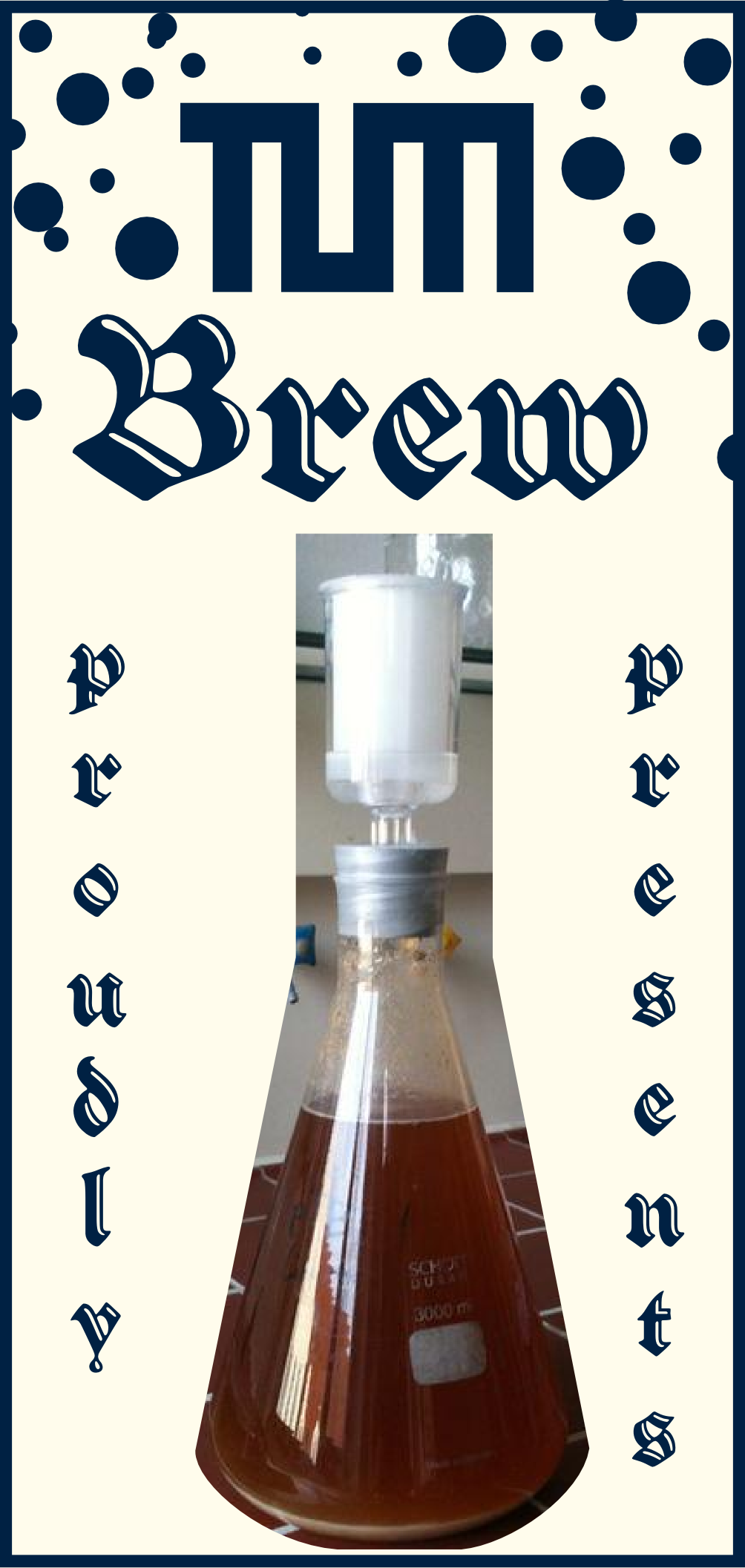Team:TU Munich/Project/Overview
From 2012.igem.org



Contents |
Overview
Vision
We, TU Munich’s iGEM team 2012, strive to catalyze the diffusion process of knowledge about genetic engineering and synthetic biology among the general public. Using the example of iGEM’s first and finest SynBio Beer we involve, interest and inspire people to reconsider preconceived ideas and encourage them to openly engage in a broad discussion weighing pros and cons of genetic engineering in foodstuff. We sketch a future where new technology can be applied in a meaningful way to complement traditional foods or beverages.
Vector Design
To be able to test and quantify the expression of desired enzymes in yeast we designed an expression vector which is compatible to the iGEM RFC25 standard based on the commercially available pYES2 vector from Invitrogen.
50-100 words on results
Regulation of Genexpression
By developing inducible promoters and placing them upstream of our biosynthetic pathways we create the possibility to make S. cerevisiae dynamically respond to concentration changes in its medium as well as to external stimuli.
An optimal inducing substance needs to be inexpensive, nontoxic and fully controllable in its application. Only substances with these characteristics allow to precisely regulate a system temporally, spatially and quantitatively.
Ethanol-inducible promoter
50-100 words on results
Light-switchable promoter
The idea behind a lightswitchable system is to create a gene expression system which can be induced and deactivated by light of a certain wavelengths.
This system is extremely attractive, as induction does not require the addition of a specific substance. This makes induction cheap, fast, precise and also compatible to the bavarian purity law.
50-100 words on results
Biosynthesis pathways
50-100 words introduction
Limonene
Limonene is a cyclic terpene and a major constituent of several citrus oils. D-Limonene has been used as a component of flavorings and fragrances. It is formed from geranyl pyrophosphate by limonene synthase.
We will produce the flavoring substance limonene by expressing limonene synthase in S. cerevisiae, which naturally synthesizes the educt geranyl pyrophosphate.
50-100 words on results
Thaumatin
Thaumatin is a natural α+β-protein which is synthesized by the katamfe plant (Thaumatococcus daniellii). It is said to be 2.000 to 100.000 times sweeter than sucrose on molar basis, but the sweetness builds slow and lasts long. It has been approved as a sweetener by the European Union (E957).
Our aim is to have S. cerevisiae secrete functional Thaumatin by expressing Preprothaumatin – a principle which has been proven by Edens et al. in 1984.(1)
The BioBrick for Prepro-Thaumatin [http://partsregistry.org/wiki/index.php?title=Part:BBa_K801080 BBa_K801080] aswell as a expression cassette [http://partsregistry.org/wiki/index.php?title=Part:BBa_K801080 K801080] were successfully cloned, expression in yeast, purified using a ion exchange chromatography (see figure C) and detected in the SDS-PAGE. Therefore the expession of Thaumatin in yeast could be demonstrated and functionality of the BioBrick is confirmed.
A proof of principle for the expression of Thaumatin was achieved. Further goals would include to increase the expression of the thaumatin and to investigate the secretion.
Caffeine
Caffeine is a purine-alkaloid and its biosynthesis is known from coffee plants and tea plants.(3) The molecule acts as a competitive antagonist on adenosine receptors and therefore increases indirectly neurotransmitter concentrations resulting in warding of drowsiness and restoring of alertness.
The idea is to perform a heterologous gene expression of the three enzymes 7-methylxanthosine synthase (CaXMT1), N-methyl nucleosidase (CaMXMT1) and caffeine synthase (CaDXMT1) required for caffeine biosynthesis in Saccharomyces cerevisiae.
- Successful cloning of the three enzymes CaXMT1, CaMXMT1 and CaDXMT1 into the shuttle vector pTUM102 and pSB1C3 each.
- Successful cloning of the expression cassettes consisting of promoter, gene and terminator (pTEF2-CaXMT1-tADH1, pTEF1-CaMXMT1-tADH1 and pTEF2-CaDXMT1-tADH1) into pSB1C3.
- Successful cloning of the caffeine synthesis pathway consisting of all three enzymes flanked by promoter and terminator (pTEF2-CaXMT1-tADH1-pTEF1-CaMXMT1-tADH1-pTEF2-CaDXMT1-tADH1)into pSB1C3.
- Successful expression of CaXMT1, CaMXMT1 and CaDXMT1 in Saccharomyces cerevisiae INVSc1 in selective Sc minimal induction medium with 2% galactose lacking uracil.
- Enzymassay???Nachweis Koffein????
The homologue expression of the three required enzymes for caffeine synthesis in Saccharomyces cerevisiae INVSc1 transformed with pTUM102CaXMT1, pTUM102CaMXMT1 and pTUM102CaDXMT1 succeeded. Further testing of caffeine production using crude extracts from lysed transformed yeast cells and working on genome integration of the expression cassette consisting of all three enzymes flanked by promoter and terminator for caffeine production during expression are in progress. (belongs to ongoing results)
Xantohumol
Xanthohumol is known as a putative cancer chemopreventive agent, due to its antioxidant activities (Miranda et al., 2000).(2) Our goal is a heterologous gene expression of all enzymes required for xanthohumol biosynthesis in S. cerevisiae.
The pathway for the production of this plant secondary metabolite is composed of five steps, starting with the conversion of phenylalanine and followed by four further enzymatic reactions.
The whole biosynthetic pathway for the production of Xantohumol was converted into BioBricks. Except for APT each of the enzymes were cloned in two versions one having the proposed consensus sequence for more efficient expression in yeast chassis and another for usage of these BioBricks in other chassis. All BioBricks were sequenced. Sequences can be found in the registry of standard biological parts: !!!LINK: get selected sequence [ BBa_], [ BBa_], [ BBa_], [ BBa_], [ BBa_K801094], [ BBa_K801095], [ BBa_K801096], [ BBa_K801097], [ BBa_K801098]. [http://partsregistry.org/Part:BBa_K801090 BBa_K801090] [http://partsregistry.org/Part:BBa_K801091 BBa_K801091] [http://partsregistry.org/Part:BBa_K801092 BBa_K801092] [http://partsregistry.org/Part:BBa_K801093 BBa_K801093] [http://partsregistry.org/Part:BBa_K801094 BBa_K801094] [http://partsregistry.org/Part:BBa_K801095 BBa_K801095] [http://partsregistry.org/Part:BBa_K801096 BBa_K801096] [http://partsregistry.org/Part:BBa_K801097 BBa_K801097] [http://partsregistry.org/Part:BBa_K801098 BBa_K801098]
The construction of the Xantohumol pathway was achieved whereas the expression and characterization has to be postponed after the european Jamboree or migth be an interesting task for next year's iGEM teams.
Genome integration
As we can't obey the letter of the German Purity Law (there is a zero tolerance policy concerning transgenic ingredients), we try our best to meet the spirit. Thus, it is unacceptable for us to work with antibiotics to keep up the selective environment. Since we can't work with auxotrophies in beer either, we have to make sure the yeasts don't get rid of the biobricks. The most promising way to accomplish a long lasting presence of our constructs is to achieve genome integration.
50-100 words on results
Brewing our SynBio Beer
Contrary to popular opinion, the chief ingredient of beer is not YPD but gyle, a carefully prepared mixture of malt, hop, barley and water. Although the name S. cerevisiae suggests that it is used in the beer brewing process, in fact the yeast employed in brewing have strongly adapted to gyle, as they are reutilized in every succeeding brewing cycle. Hence some investigation on how our yeast performs in gyle was necessary.
50-100 words on results
Businessplan for our TUM Brew
50 - 70 words introduction
50-100 words on results
Our RFC for Standardization of BioBrick part descriptions
50 - 70 words introduction
Participants of TU München iGEM 2012 survey
50-100 words on results
References
- [1] Synthesis and processing of the plant protein thaumatin in yeast, Luppo Edens, Isaäc Bom, Adrianus M. Ledeboer, Jan Maat, Marjolein Y. Toonen, Chris Visser, C. Theo Verrips. Cell Volume 37, Issue 2, June 1984, Pages 629–633
- [2] C.L Miranda, J.F Stevens, V Ivanov, M McCall, B Frei, M.L Deinzer, D.R Buhler, Antioxidant and prooxidant actions of prenylated and nonprenylated chalcones and flavanones in vitro, J. Agric. Food Chem., 48 (2000), pp. 3876–3884
- [3] Insertion of Coffein, Römpp Online. Version 3.19
- [4] Use of the KlADH4 Promoter for Ethanol-Dependent Production of Recombinant Human Serum Albumin in Kluyveromyces lactis. Michele Saliola, Cristina Mazzoni, Nicola Solimando, Alessandra Crisà, Claudio Falcone, Gerard Jung, and Reinhard Fleer. Appl Environ Microbiol. 1999 January; 65(1): 53–60.
- [5] Development of a genetic switch based on a photosensitive protein signals the beginning of light-based biological engineering. Andrew R. Mendelsohn Nature Biotechnology, Vol. 20, October 2002, Pages 985-987
- [6] Molecular analysis of UAS, a cis element cotaining stress response elements responsible for ethanol induction in the KlADH4 of Kluyveromyces lactis. Cristina Mazzoni, Francesca Santori, Michele Saliola and Claudio Falcone Research in Microbiology, Vol. 151, 2000, Pages 19-28
 "
"








